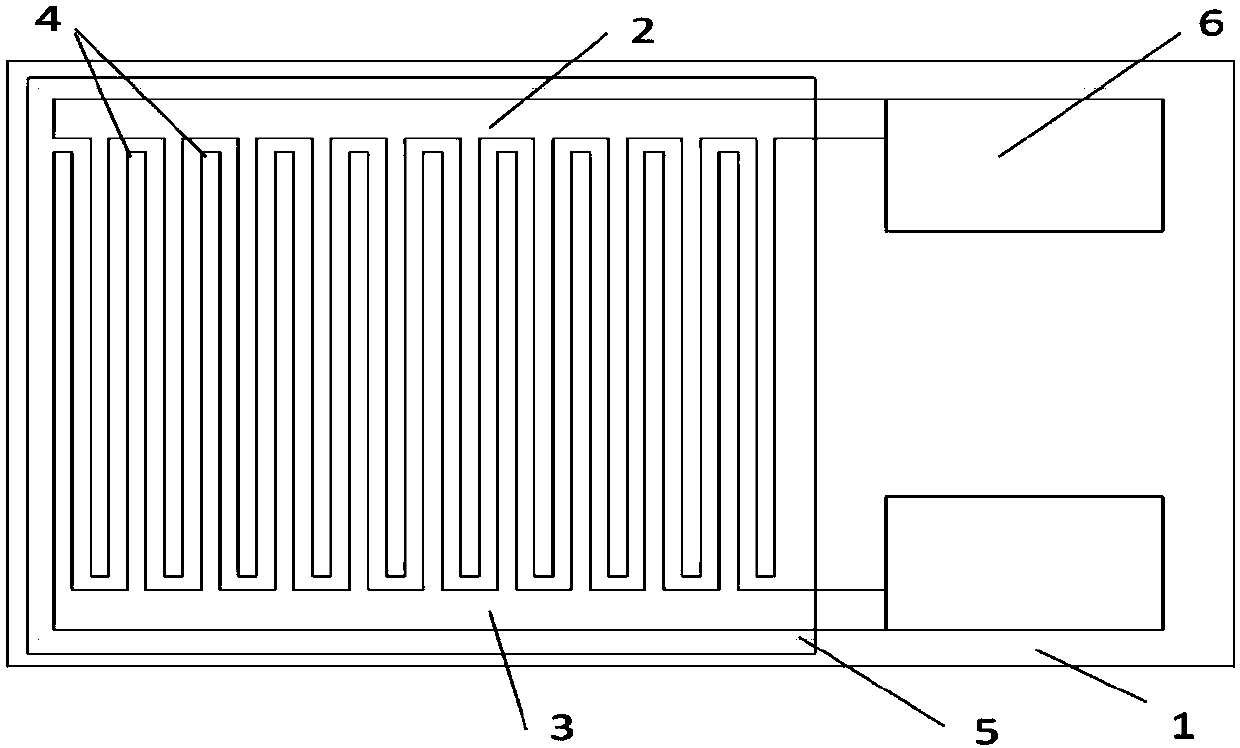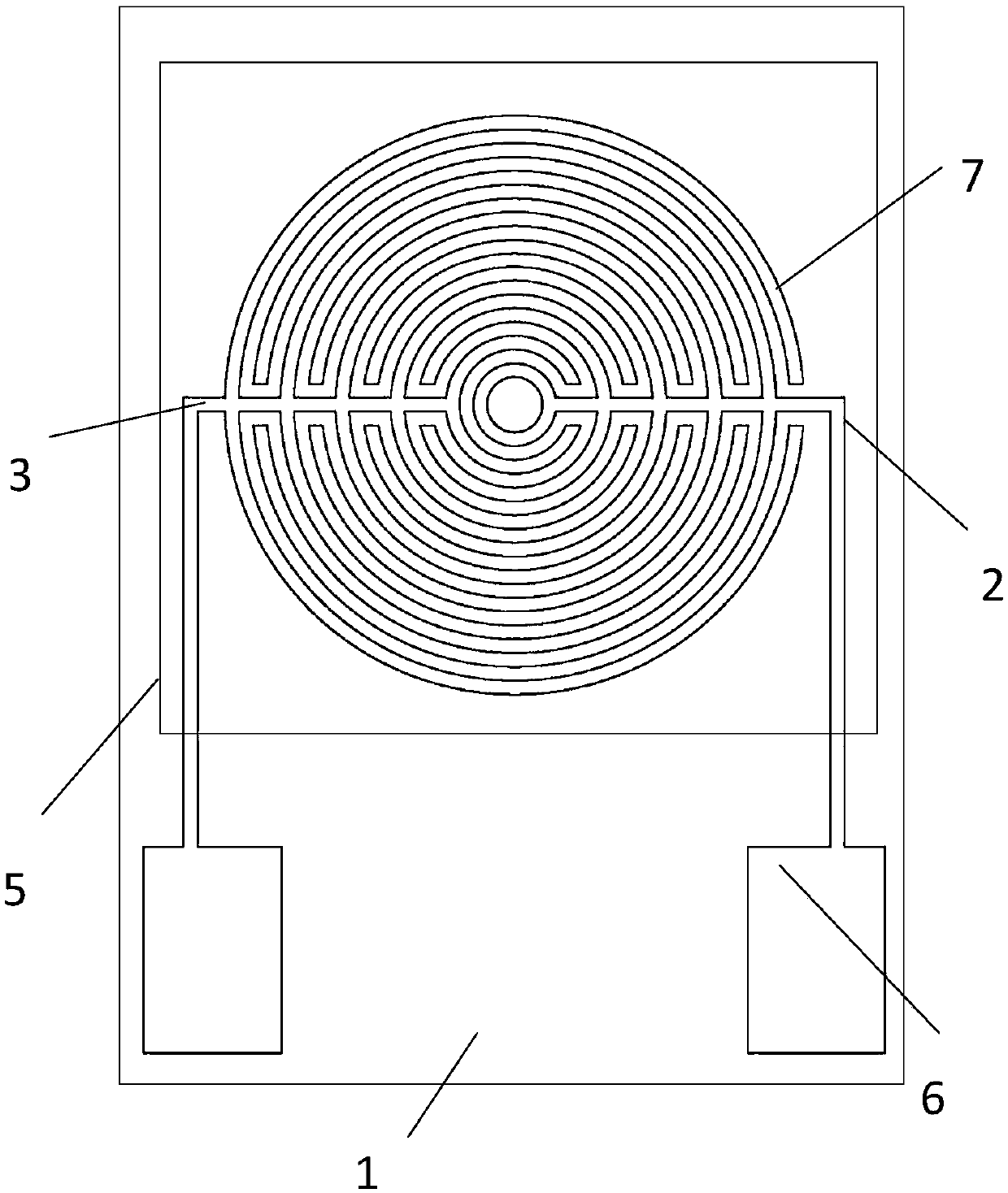Interdigital electrode array sensor used for quantitatively detecting residual chlorine in water
An electrode sensor, electrode array technology, applied in instruments, measuring devices, scientific instruments, etc., can solve the problems of poor spectrophotometry operation, complex structure, differences, etc., to improve stability and accuracy, reduce system costs, and detect high precision effect
- Summary
- Abstract
- Description
- Claims
- Application Information
AI Technical Summary
Problems solved by technology
Method used
Image
Examples
Embodiment 1A
[0031] as attached Figure 1-2 The structure of a square interdigitated electrode sensor shown is: there are two groups of electrodes on the insulating substrate 1 (ie, the first parallel metal electrode array electrode 2 and the second parallel metal electrode array electrode 3), and each group of electrodes is composed of A plurality of parallel metal electrodes 4 with a width of 1-100 microns, an interval of 1-100 microns, and a length of 100 microns to 5 mm are interlaced to form a comb-shaped double-electrode structure; the comb teeth of the two groups of electrodes are inserted into the gaps between adjacent comb teeth of the other Among them, a square electrode is formed; a layer of ion-selective film 5 is deposited on the double-electrode structure (that is, a structure composed of two sets of electrodes); there are pads 6 at both ends of the double-electrode to connect to the external circuit; the length and width of the square electrode can range from 1 to 10 mm.
Embodiment 1B
[0033] Such as image 3 The structure of another kind of circular interdigitated electrode shown is: there are two groups of 100 micron wide concentric circle metal electrodes 7 on the insulating substrate 1, and the two groups of electrodes are the first parallel metal electrode array electrode 2 and the second parallel metal electrode array electrode 7. The metal electrode array electrodes 3 are staggered to form a double-electrode structure with a line spacing of 100 microns; the diameter of the circular electrode is 1 to 10 mm; each of the two electrodes has a pad 6 to connect to the external circuit; a layer of metal is deposited on the double-electrode structure Ion-selective membranes5.
Embodiment 2
[0035] as attached Figure 4 As shown, the ion-selective film is bound to the surface of the sensor through a certain chemical bond; two pins are welded on the two electrodes of the sensor, and the pins are directly connected to the voltage test circuit or electrochemical workstation; put the sensor sensor into the solution to be tested In the method, the chemical substances in the ion-selective membrane can selectively react with the hypochlorite in the solution to be tested, and the potential is directly measured with a millivolt meter, millivolt circuit, or electrochemical workstation.
PUM
| Property | Measurement | Unit |
|---|---|---|
| diameter | aaaaa | aaaaa |
Abstract
Description
Claims
Application Information
 Login to View More
Login to View More - R&D
- Intellectual Property
- Life Sciences
- Materials
- Tech Scout
- Unparalleled Data Quality
- Higher Quality Content
- 60% Fewer Hallucinations
Browse by: Latest US Patents, China's latest patents, Technical Efficacy Thesaurus, Application Domain, Technology Topic, Popular Technical Reports.
© 2025 PatSnap. All rights reserved.Legal|Privacy policy|Modern Slavery Act Transparency Statement|Sitemap|About US| Contact US: help@patsnap.com



